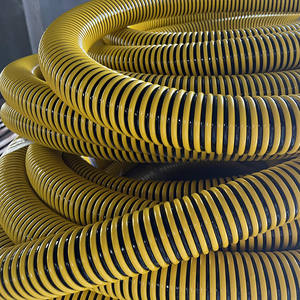High-Pressure LP Gas Hose for Safe and Efficient Gas Transfer Applications
Understanding High Pressure LP Gas Hoses An Essential Guide
High pressure LP (liquid propane) gas hoses are crucial components used in various industries, including cooking, heating, automotive, and more. These hoses are designed to transport propane gas safely and efficiently under high pressure conditions. Understanding the features, applications, and safety measures associated with high pressure LP gas hoses can help users make informed decisions when selecting and using these essential tools.
Construction and Materials
High pressure LP gas hoses are typically made from a combination of materials that can withstand the rigors of high pressure environments. Common materials include rubber, thermoplastic, and synthetic compounds, which provide flexibility and durability. The inner lining of the hose must be resistant to the chemical properties of propane to prevent leaks and degradation over time. Additionally, many high pressure hoses are reinforced with layers of braided textile or steel to enhance their strength and resilience against bursts or punctures.
Pressure Ratings
When selecting a high pressure LP gas hose, it’s essential to consider the pressure ratings. These ratings indicate the amount of pressure a hose can handle without risk of failure. Typically, high pressure LP gas hoses can handle pressures ranging from 250 to 750 psi, although specific ratings can vary based on the hose's construction and intended use. Users must ensure that the selected hose matches or exceeds the pressure requirements of their specific application to avoid safety hazards.
Applications
High pressure LP gas hoses are used in various settings, including
1. Culinary Applications In commercial kitchens, high pressure hoses connect propane tanks to grills, fryers, and ovens, enabling efficient cooking processes. Chefs rely on these hoses to maintain consistent heat levels while ensuring safety protocols are met.
2. HVAC Systems High pressure LP gas is commonly used in heating systems. Hoses facilitate the transport of propane from storage tanks to heating units, ensuring that homes and industrial spaces remain warm and comfortable during colder months.
3. Automotive Industry Propane is often used as an alternative fuel for vehicles. High pressure hoses play an integral role in the safe transport of propane to engines in propane-powered vehicles, ensuring optimal performance and efficiency.
high pressure lp gas hose

4. Industrial Use Various manufacturing processes require propane as a fuel source. High pressure gas hoses are vital in maintaining a reliable supply of propane to industrial burners and heating systems.
Safety Considerations
Safety is paramount when working with high pressure LP gas hoses. Users should adhere to the following guidelines
- Regular Inspections Check hoses for signs of wear, damage, or leaks before each use. Any visible cracks or bulges may indicate a compromised hose that should be replaced immediately.
- Proper Connections Ensure that hoses are securely connected to both the propane tank and the equipment being used. Loose connections can result in gas leaks, which pose serious safety risks.
- Use Appropriate Fittings Always utilize fittings that are compatible with high pressure LP gas hoses. Mismatched fittings can lead to leaks and potential explosions.
- Storage Store propane hoses in a cool, dry place away from direct sunlight and extreme temperatures. Prolonged exposure to such conditions can weaken the hose material and increase the likelihood of failure.
- Training Ensure that all personnel using high pressure LP gas hoses are adequately trained on safe handling practices and emergency response measures.
Conclusion
High pressure LP gas hoses are indispensable in various applications, providing the necessary transportation of propane for cooking, heating, and industrial purposes. By understanding their construction, applications, and safety measures, users can effectively utilize these hoses while minimizing risks. Prioritizing safety and maintenance will help ensure the longevity and reliability of high pressure LP gas hoses, creating a safer environment for all involved.
-
Unrivaled Performance and Applications of PU Pneumatic Hoses and TubesNewsJun.11,2025
-
The Transparent World of Industrial Tubing and Hosing SolutionsNewsJun.11,2025
-
The Intricate World of Pneumatic Conduits: Tubes and HosesNewsJun.11,2025
-
The Dynamic Landscape of Pneumatic Conduits: Unraveling Key ComponentsNewsJun.11,2025
-
The Diverse Applications and Significance of Transparent PVC TubingNewsJun.11,2025
-
High - Pressure Pneumatic Tubing and Systems: An In - Depth LookNewsJun.11,2025














